The story of the East Prussian “wolf children” is both one of the most extraordinary and least known stories of displacement during the Second World War and a reminder of the radically altered map which the conflict left, especially in the eastern half of the continent. East Prussia, a region alongside the Baltic Sea around the city of Königsberg (now Kaliningrad) which had been largely German-speaking for centuries despite being surrounded by Polish- and Lithuanian-populated territories, was the first area part of the pre-war German state to be reached by the Red Army during their march to the west during the closing months of the war. Their arrival eventually resulted in the almost total expulsion of the German population and its absorption into the Soviet Union (most of the region is now part of the Kaliningrad oblast, an exclave of the Russian Federation surrounded by Poland and Lithuania).
Those left behind included tens of thousands of children, either left orphans by the war or sent by their parents to nearby Lithuania in search of food. Those who made it across the border, as many as 5,000 according to historians’ estimates, were named “little Germans” (vokietukai in Lithuanian) by local people – a term which later became superseded by “wolf children”, which is how they are generally known today. Many remained in Lithuania, now also under Soviet control, being adopted by local families, adapting to the local language and culture, and often taking Lithuanian names. As it was put in a 2013 DW article on the subject: “loss of identity was the price of survival”; in the Stalin-era Soviet Union most wolf children were fearful of revealing their heritage and contact with any remaining family was difficult or impossible.

Outside the Soviet Union, there was similarly little interest in their stories: in post-’60s West Germany, this had a lot to do with a concern among many that focusing on German suffering would promote notions of German victimhood, while in East Germany state control over historiography made it difficult to present the incoming Soviet forces as anything other than liberators. This has gradually changed in recent years, with a number of features on the work of photographers Claudia Heinermann and Lukas Kreibig, who have covered the subject. It’s also been reflected in fiction; the novel In the Shadow of Wolves by Lithuanian author Alvydas Šlepikas appeared in the original language in 2011, and was published in English, translated by Romas Kinka, in 2019. A spare and powerful tale of children forced to leave their starving family and survive in the wild, it’s been described as “the perfect balance between documentary and literary narrative” by Kieler Nachrichten, while Dresdner Neueste Nachrichten considered that “Alvydas Šlepikas has broken the dam of silence”. Deep Baltic’s Will Mawhood spoke to Šlepikas via email last year to ask about the questions raised by the book and the theme of the wolf children more broadly.
While the destruction and devastation that has been wrought on the small town in East Prussia where the book is set is obviously a direct result of a titanic struggle between two enormous powers and ideologies, we get almost no sense at all of the reasons behind the war. The struggles are very much peripheral, the impact of ideologies is barely addressed, and the question of the occupation of Lithuania is hinted at but also not openly broached – there are brief appearances from the Forest Brothers, but the children are not fully aware of them or the reasons for their actions. Was prioritising the destructive impact on a human level a deliberate decision?
The causes of the war are described in history textbooks. I wrote a simple story about how a child wants to survive the storm of war. The novel starts on 1 January 1946 and continues over several months until the second day of Easter. I am writing about a German family that is scattered and separated by the war. This happened to many German families in East Prussia.
When I talked to the surviving wolf children, many of the moving stories they told were similar to each other. The details differed, but the stories themselves were the same in their own way: separation, loss of family, trying to survive, the journey to Lithuania, hunger, cold, the deaths of loved ones, and, in Lithuania, help or rejection from the people they met. Some of the wolf children met good people, others met bad ones. But the essence of all the stories was the journey from the realm of death across the river to another country where there was bread and opportunities to survive. It is almost a kind of retelling of a myth: return from Hades. I didn’t know for a long time how to write about it, and in the end I chose a short period in one family’s life, which, in my opinion, reflects the senselessness and cruelty of war, and which, in a way, sums up all the stories that I have heard and read.
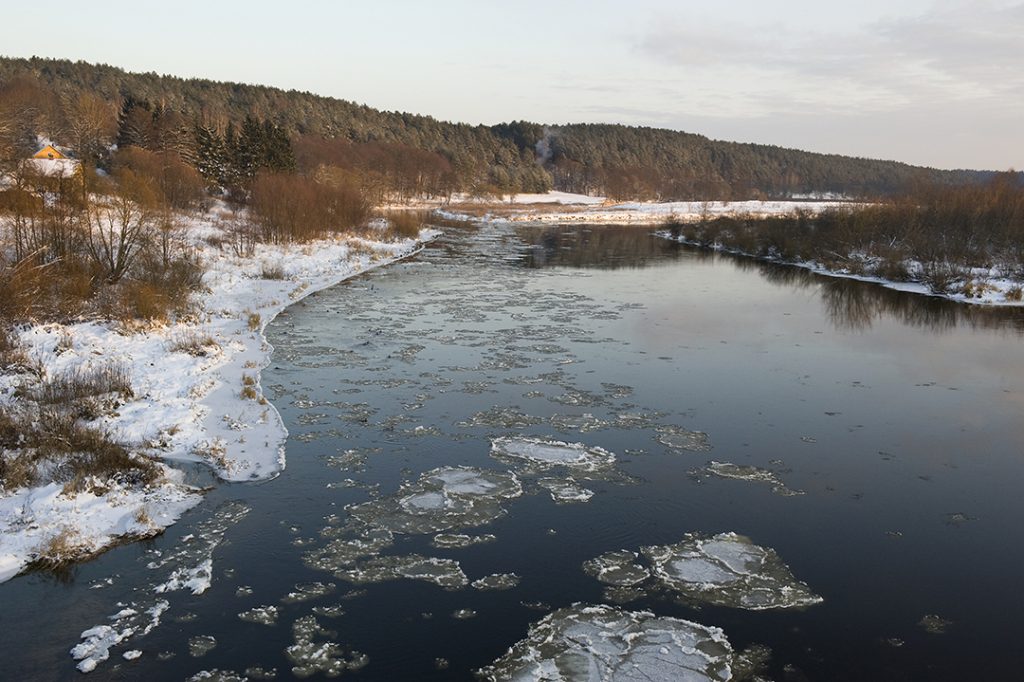
In the novel, the children are not left by their family, as was the case with most of the “wolf children”, but are sent by their surviving family (or volunteer themselves) to go to Lithuania to bring back food. Was there any reason you decided to modify the classic story in this way?
The question is not accurate, as wolf children entered Lithuania in many different ways, and I did not have to modify anything. After the Second World War, East Prussia was completely destroyed, the Red Army was very brutal, there was a terrible famine, people were dying in the streets, and there was even cannibalism.
The Soviet authorities, seeing that the situation was out of control, allowed Lithuanian farmers to go to East Prussia to sell food. The most common kind of trade was barter: in exchange for food, German women gave what they had saved in the storm of war: cutlery, any kind of clothing, anything they had. But all those things soon ran out, and the famine continued – the Soviet government gave bread only to women who worked – every woman who dug trenches or demolished ruins received three or four hundred grammes of bread a day. Children and grandparents got nothing. For a whole family, a few hundred grammes of poor bread was very little. Families in East Prussia were large, and mothers, left alone with sometimes ten children and seeing them starving to death one after the other, would go to Lithuanian farmers and ask them to take the eldest child as a helper, as a shepherd, and in return they would ask for potatoes, flour and so on.
When we talk about my book in schools (it is included in the Lithuanian school curriculum for the upper grades), teenagers often find it difficult to understand how mothers could “sell” their children for food. But the situation was so difficult, the famine so severe, that the mothers hoped that the older children, if they could not find their way back, would at least survive, and that the half a bag of potatoes or a loaf of bread would help the younger children to endure, not to die, to stay alive. Farmers did not always agree to take a child away – they were afraid of reprisals, of being caught by the Soviet soldiers who were guarding the border between East Prussia and Lithuania at that time. Nevertheless, some agreed to exchange food for a child (sometimes not to get a day labourer, but because they saw the terrible situation of German women and their children; for many farmers, this was the only way to East Prussia, and they were horrified by the starvation and the destruction in that land). This is how the first children ended up on Lithuanian territory.
Other children and teenagers saw farmers coming from across the Nemunas River with food and began to make their own way to Lithuania in various ways – hiding on trains, walking across the frozen ice of the river, or asking farmers for a ride.
In many cases, they had already lost their families and been separated from their mothers, because the Soviets, when they took the women to work, did not care at all about returning them to the places where they lived; on the contrary, the next day they took them somewhere even further away, without caring that the women had children, that they were separating and dispersing the families in this way. In this way, many children were left without mothers. They looked after each other, the older ones looked after the younger ones, and they wandered around looking for their mothers and for ways to survive. Lithuania attracted them like a fairy-tale land from which farmers brought bread.
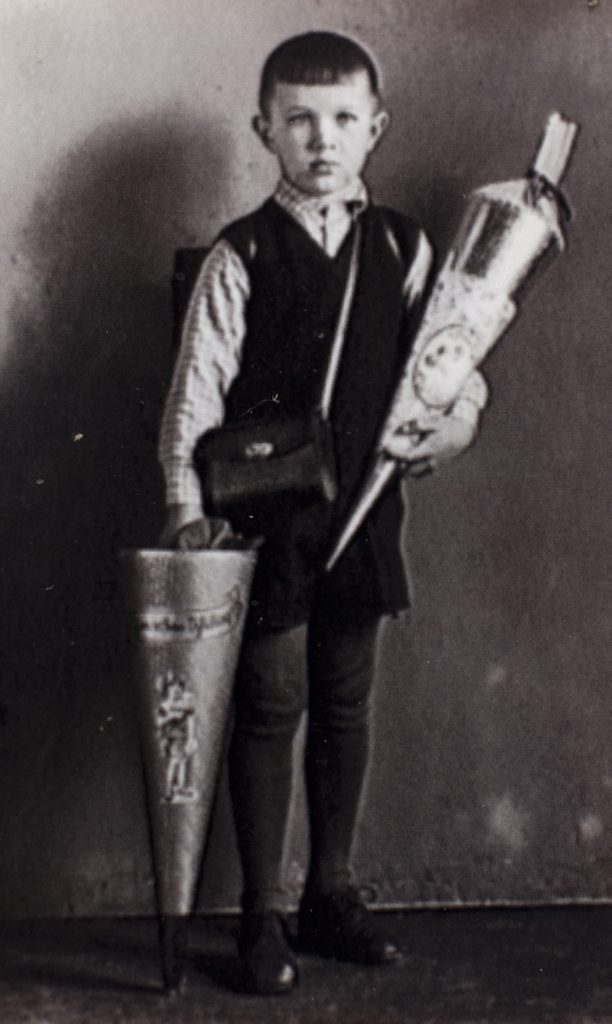
The children who lived wild in Lithuania after World War II were initially called vokietukai (little Germans) – “wolf children” is a later tag. How did this name arise?
In my book, I avoid using the term “wolf child”, as it is really a later term. It is believed that the Germans came to be called wolf children because they could not be spoken to in any language other than German. Few Lithuanians knew the language, and the children often stayed in the undergrowth, which they went out of to work, beg or steal. So the children coming from the forest, speaking an incomprehensible language, intimidated, always ready to defend themselves, not trusting anyone, certainly looked as if they were wolf cubs. This is believed to be the origin of the name.
It seemed to me that one of the recurrent themes of the book is the way that traumatic experiences can spark a process of depersonalisation – leading to people becoming strange to themselves and to others. “Famine and cold can defeat people, break them. They become empty metal mechanisms who don’t hope for anything, aren’t afraid of anything and aren’t surprised by anything. Time passes slowly without any variation, and movements become mechanical, as do thoughts”. Children repeatedly dream of their parents without faces. At least part of this is simply down to hunger: “Whenever she felt dizzy, her everyday existence became dreamlike. It was difficult to tell what was a dream and what was not.” Do you think this aspect of life during a catastrophe is sometimes forgotten by people when they think or write about these times?
I don’t really understand the question, so maybe I can’t answer it: I’m not a philosopher, and I don’t care much for philosophy. When I wrote about the dreams of those children, about their feelings in the cold, in hunger, in starvation, I wrote in search of empathy and compassion, I tried to put myself in their shoes. I used my own experience in the Soviet army, when we were starving and freezing on the Kazakh steppes – that lasted two years. So I knew hunger and cold – especially cold – very well. I combined my experiences with the stories I had heard, the details of them, and tried to imagine a world at that time with no shores of escape – after all, the whole of Europe had been hit, destroyed, devastated. Children were travelling through a kind of desert or digging their way through the cold open sea, where there was little hope of being rescued by anyone. I once had a dream myself, away from home, of my mother. She had no face in the dream, and I was terrified that I had forgotten it. It was one of my scarier nightmares. I do not know whether this has anything to do with “depersonalisation”.
Linked to depersonalisation, perhaps, is dehumanisation by others. The book opens with Soviet soldiers shooting at German children trying to cross the River Nemunas, referring to them as “fascist pigs”, and just a few pages later a Russian woman feeding potato peels to crowds of starving locals refers to them as “Pigs is what they are, they’re not even human”. In Lithuania too, there are similar reactions at times – “she’s a German, one of those wolf-children – the area around the forest is full of them. They’re like lice, they steal anything, they’re always begging.” Is this something that was particularly typical to this period of history, and can it be extended to other situations and times?
War is a completely unnatural, liminal situation for human beings, where the animalism of some people and the holiness of others are revealed. Some kill and torture innocent people, while some hide, rescue and feed others. This is typical of all periods, of all wars at all times, because no war is good in any way. The Second World War was a particularly brutal, draining, exhausting war. Nazi Germany and the Soviet Union were to blame for this war. Stalin and Hitler were two monsters who decided to divide the world. They started with Poland and then became entangled with each other.
Since East Prussia was the first German land that the Red Army reached at the end of a terrible, long war, it was there, in East Prussia, that the victorious soldiers behaved with extreme cruelty. The soldiers of the Red Army were war-exhausted people, like earthenware vessels in a war blast furnace. They had suffered countless deaths during the long years of the war, they had seen their comrades killed, they had killed many enemies themselves, and they behaved inhumanely when they reached German soil: one less human life or one more – they did not care. It was like revenge for this whole war. They killed, they raped. Soviet propaganda only encouraged brutality. The atrocities of the Red Army have been written about very honestly and frankly by Russian soldiers who saw the horrors of the war themselves: Nikolai Nikulin, in his book Memoirs of War (Воспоминания о войне), and Leonid Rabichev, in his book The War Will Write It All Off (Война всё спишет), which is an impossible book to read without being terrified. Of course, it is probably easier to kill when the enemy is rendered faceless, nameless, dehumanised. This is true of the Holocaust and of other genocides.
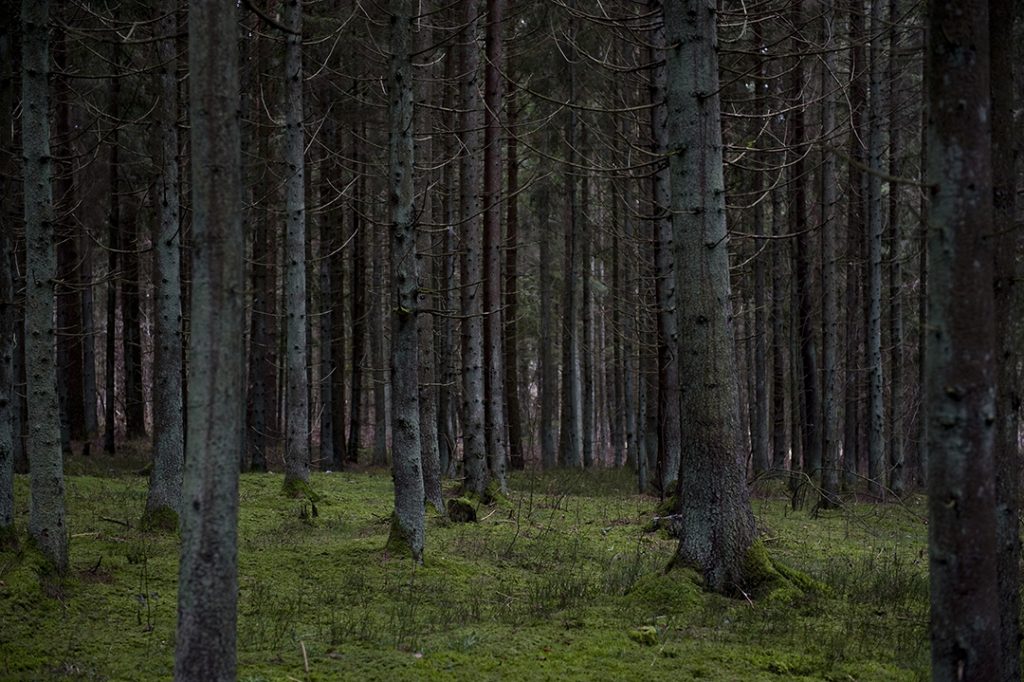
Images of fog and blankness recur throughout the book (“the endless white fields” of p. 90). I wondered if part of the reason for this was the book’s setting in East Prussia, which perhaps even more than anywhere else in Europe, was remade as a blank slate after World War II, its prior history almost wiped. I believe the town where the book opens is based on the town in Kaliningrad formerly called Gumbinnen, which was renamed Gusev in 1945, after a Red Army captain. On the first page, we read “here are the new arrivals, colonists, destroying everything that has survived – churches, castles, cemeteries, drainage systems, animal pens” (and the family of the main protagonist, Renate, have their house taken by a Russian woman). Have you visited the area where most of the book is set, and how far do you think the pre-war history is detectible?
Yes, of course, I have visited what is now Kaliningrad, and more than once. In fact, everything that could be destroyed has been destroyed there. Every effort has been made to erase any memory of the past of that land, of its old inhabitants. The settlers – now locals – often live in red brick houses, with plastic sheeting over the windows, rubbish piled up in the middle of the courtyard, birch trees growing on the roofs and on the walls of the ruined churches, cemeteries have been destroyed, and people’s memory has been destroyed too.
The guide boldly says to the tourist: “These lands have belonged to the Russians since time immemorial and always will”, or “The oldest university in Russia is the University of Kaliningrad”, etc. I have personally heard this more than once.
At one time, there were attempts by intellectuals in the Kaliningrad region to raise awareness of the past of the region, to commemorate, preserve and record the legacy of the people who lived there before, but now that relations with Russia have practically broken down, and an authoritarian regime has established itself, it is impossible to talk about any exploration of the past or respect for the heritage of the past.
More than one wolf child has said that they have travelled to the places where they were born and lived as children, but most of the time they have found nothing there, and when they have tried to speak to the people who live there, they have been met with only anger and hostility. Mr Bernard Keusling, one of the wolf children, said that when he was living in Lithuania, and was already married, he used to go to the Kaliningrad region, to his home, and he used to sit on a hill and look at his former home, where some people were living. He used to do this periodically, during every holiday. He never dared to speak to these people.
In Lithuania, the children experience a wide range of reactions – some willingly help and protect them, others fear them and drive them away. Some even display different reactions at different times. I imagine this reflected the real range of attitudes that people in the country felt towards the begging children. What kind of reactions did you come across during your research?
Lithuanians, like all people, are different. Some are good, some are bad, some are cowardly, some are brave, some are selfish. The wolf children said they had met both good and bad people, but most of them were grateful to the Lithuanian people for helping them, sharing their food and shelter. However, it must also be admitted that the only and the main criticism I heard from the “wolf children” who had read my book was: “things were crueller in real life”.
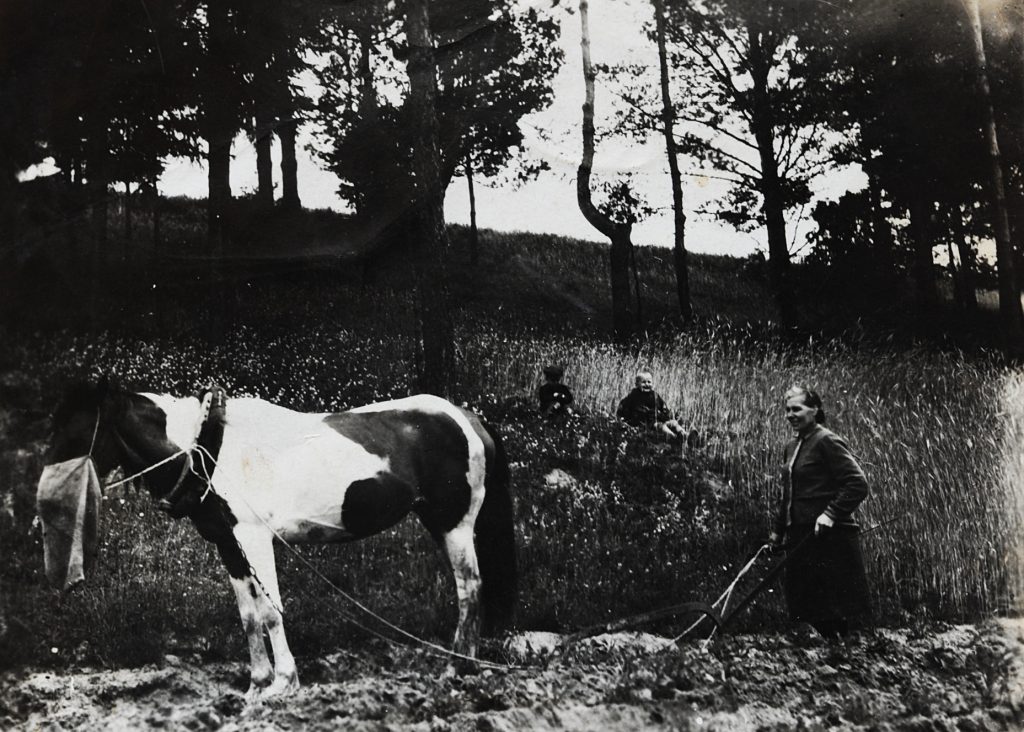
What importance has East Prussia historically had to Lithuania, and what do you think has changed for the country with the shift of its western neighbour from a German-dominated to Russian-dominated territory?
Historically, East Prussia is extremely important for Lithuania. In the past, it was known as Lithuania Minor. It was the cradle of the Lithuanian Reformation, the place where the first Lithuanian book was printed – M. Mažvydas’s Katekizmas (1547) – and where Kristijonas Donelaitis, the pioneer and classic of Lithuanian poetry, lived and worked in the 18th century. Lithuanian place names and hydronyms also testify to the past of these places. Of course, as the Lithuanians of Lithuania Minor declined due to Germanisation and several outbreaks of plague, Lithuania Minor became East Prussia, where the majority of the population were Germans (some newcomers, some Lithuanians who had settled there – as evidenced by Lithuanian surnames). Even today, there are still many Lithuanians living there.
Kaliningrad is now a Russian area crammed with weapons and troops. In some Lithuanian towns close to the border between Lithuania and Kaliningrad, you can hear the sounds of Russian military manoeuvres almost every day: tanks, artillery, etc. This is done (firing, manoeuvring) deliberately as close as possible to our border. Relatively recently (2018), Putin also moved powerful Iskander missiles capable of carrying nuclear weapons to the Kaliningrad area. As you understand, this is not a pleasant neighbourhood for us in Lithuania. Especially when we hear every day from the leaders of France and Germany how we should be friends with Putin and not annoy him.

Identity seems a key question in the novel. The title of the book in its original language is Mano vardas – Marytė (“My Name Is Marytė” – a common Lithuanian name), after a phrase which Renate has been taught and repeats in Lithuania, because being known to be German could be dangerous both for her and those who have helped her. A particularly memorable section has Eva telling her children some key pieces of information to remember in case they are separated, including their German nationality (‘Try not to boast about being German. Just remember that it’s what you are.’”) There’s a quote from a National Geographic story on this subject, from one of the “wolf children” who had settled in Vilnius, who says “my heart is German but I am Lithuanian”. Did you notice similarly confused identities among the other wolf children you researched?
As you know, in pre-war Lithuania, all family-related documents were handled in parishes. Therefore, in order to take a child into the family, people asked pastors for help – of course, only if they knew that the priest was trustworthy and would not betray them to the Soviet repressive structures. For fear of being victimised by the Soviets, people tried not to give them any pretext to be deported to Siberia, evicted from their homes, or sent to the Far North. Often there was no need for a reason, just the fact that one of the local activists liked your house or other property. So anything could be a reason to be caught up in the repressive machine and to be arrested, repressed, deported or killed far from home. That is why many people were afraid to take in German children for fear of being victimised. Those who were willing often changed the identity of those children – one of the ways of doing this was that the pastor would write out a death certificate for the child, and then the person with the certificate would go to the Soviet authorities and say: “During the war, my child became very ill, and the pastor even wrote out a death certificate, but thank God the child recovered. Only in the turmoil of the war did we lose the birth certificate of our child.” In this way, Soviet officials issued a new birth certificate, with a Lithuanian name. In this way, the identity of the German children was changed. This was done in order to save the children, to shelter them, to take them into the family, but later on it also caused a lot of trouble for the children, because the adoptive parents were afraid all their lives that this forgery would come to light, that it would be discovered. In most cases, very few of the wolf children received a good education, or even finished school at all.
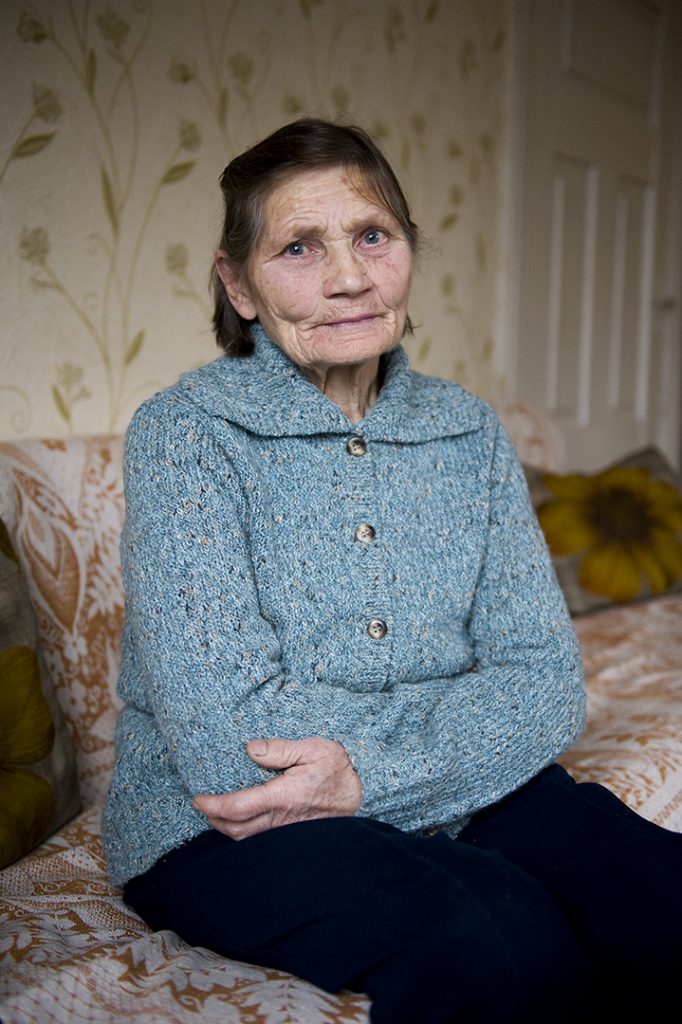
“My father and two of my elder brothers died during the war. With my mother and other brothers, I had to flee. At the end of the war, refugees like us were told to return to their home countries. It was an endless journey, during which we suffered daily starvation and found hardly anything to eat. We usually slept in roadside ditches, destroyed houses or empty stables. One evening, when we had again found refuge in an abandoned farmhouse, Russian soldiers came and raped Mother all night while we children had to wait outside. Mother struggled hard to defend herself but was eventually killed. There was no other way than to leave her behind and continue without knowing where to go. I was only nine years old. On the way we lost my youngest brother. My other brother and I found shelter with a farmer’s family in Lithuania” [Image: Claudia Heinermann]
Most of these German children did not find out that they were German until they were elderly. Their identity had obviously changed, they no longer spoke German, and when they found their relatives later on, they could not communicate with them. However, it has to be said that the vast majority of them were very enthusiastic about learning the language, about finding their roots, and many of them went to live in Germany. However, I have heard one person complain that he would at least like to know his real name before he dies – he had somehow found out his surname, but not his first name. Another man showed his passport, which did not contain his date of birth, only the year, and in which the numbers for the month and day were zeros.
The wolf children are almost invariably described as “forgotten” in the few news stories and features in English that mention them. You describe speaking to young Germans during the writing process, mentioning you were researching the story of the wolf children, and getting the baffled response “is that Tarzan?” Do you get any sense that the situation has changed in Germany in the decade since then?
In Germany, after the Second World War, there was a huge sense of guilt about what Nazism did. It was out of the question to talk about the fact that Germans, even if they were only children, could also be victims of war. This created a kind of blank spot in history. In Lithuania, too, there was no discussion of German refugees, because the occupying Soviet government would not indulge such talk. The Germans themselves, who had experienced the fate of the wolf children, also felt it taboo and did not want to talk about their fate. Above all, apparently, because it was a traumatic experience. They had experienced everything – starvation, rape, shootings, loss of loved ones. They went through the circles of hell in their childhood, and maybe that is why it was so difficult to remember it afterwards.
The situation in Germany is changing at the moment. There are books, films, television programmes and academic studies on the various aspects of the Second World War. The blank spots in history are also beginning to be filled in. There is now talk of wolf children, of the rape of German women, of the children born of that rape and their lives.

How would you say levels of awareness of this part of history in Lithuania differ, when compared to Germany? I know that the Lithuanian government does grant the wolf children a small pension.
In Lithuania, the story of the wolf children is now quite well known, with several books – both original and translated from the German language. The post-war period, including the wolf children, is taught at school. The Lithuanian state also helps the wolf children. On the other hand, in Lithuania it is forbidden (except in exceptional cases) to have dual citizenship. Therefore, the wolf children were forced to choose which citizenship to have. Naturally, many of them chose German citizenship and went to live there. Germany gives them apartments and pensions. I cannot comment on the specific pensions paid by the Lithuanian government to the wolf children.
What kind of reaction did the novel receive in Lithuania, and was there anything that surprised you?
The book became very popular in Lithuania, and I was invited to libraries in many towns and villages, where readers of all ages gathered, and at every meeting, there were older people who would tell me about their post-war experiences and show me old photographs of them with German children. Sometimes they said that they were still in touch with people living in Germany, sometimes they did not know anything about the fate of the children they had once met. However, it became obvious that the story of the wolf children was known all over Lithuania, only the fear of the Soviet occupation created a sort of taboo. Just like the post-war resistance, the German children were also feared, so my generation knew nothing about them. I have often heard from the children of the wolf children that, when their parents gave them my book to read, they began to talk about their lives and their experiences, which they would have kept quiet about before. In this way, the book became a catalyst for people to talk about their pasts and traumas.
What are you working on at the moment?
I’m currently working on a new book, which should be a novel. It’s going slower than I’d like, so I’m afraid to reveal any details. I also write a poem from time to time: I will probably have a new book of poems soon.

Alvydas Šlepikas’s In the Shadow of Wolves is available now from Oneworld Publications
© Deep Baltic 2022. All rights reserved.
Like what Deep Baltic does? Please consider making a monthly donation – help support our writers and in-depth coverage of Estonia, Latvia and Lithuania. Find out more at our Patreon page.

